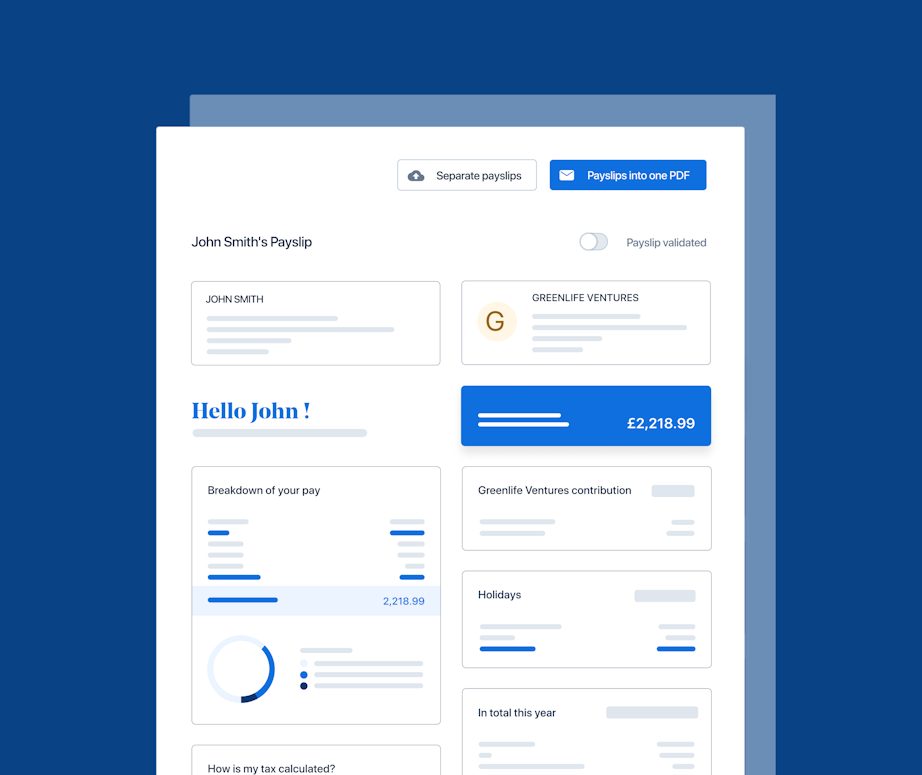The Cost of Outsourcing Your Payroll

To outsource or not to outsource — this might be the dilemma currently staring you in the face when it comes to your payroll .
On the one hand, you’ve got so much to do in-house. On the other, payrolling outsourcing costs can certainly add up.
While it might be tempting to outsource processes that require skilled hands, you’ll end up paying a pretty penny for the privilege. So you have to work out if the cost of outsourcing your payroll is effective, or whether, with a little support and guidance you can more easily manage payroll inhouse.
This blog explores the costs of outsourcing payroll services in the UK, including those pesky hidden ones. Hopefully, it helps you understand if outsourcing is for you or if there’s a better solution out there! (Hint: there is.)
What is outsourced payroll in the UK?
Also known as ‘fully-managed’ or ‘part-managed’ payroll outsourcing is when you hire a third party to oversee your payroll so you don’t have to manage it in-house. This third party will likely be an accountant or payroll bureau fit to burst with qualified payroll experts.
In all likelihood, they’ll get you to pass over a few spreadsheets filled in with your payroll data — i.e. salaries, overtime, dates employees left/started, holiday information and more.
This third-party company will then manage everything else, including calculating statutory sick pay (SSP), creating payslips, producing P60s, P45s, and P11Ds, and paying wages.
Should you outsource your payroll?
Businesses might think using outsourced payroll services removes all the problems associated with running payroll in-house, and it can. However, in reality, it also brings its own set of issues, and you still have to collate all the payroll data to send to these services.
Outsourced UK payroll introduces an intermediary into the process, making it unnecessarily long-winded, providing more chances for miscommunication, and limiting your access to your payroll data.
And keeping track of payroll data is important. It helps drive business strategy with accurate forecasting and budgeting, and understanding of resource allocation.
How much does it cost to outsource payroll in the UK?
Some payroll services fees are apparent, like actually paying for the company to run payroll. Others aren’t as obvious such as integrations and setup charges. So How much does outsourced payroll really cost?
Let’s look at some of the most common charges below…
The service itself
The payroll processing service outsourcers deliver is labour-intensive. That means you’re paying for the hours they take to complete your payroll. On average, it takes UK businesses 2.5 hours to run payroll each month.
So if you’re submitting your data in spreadsheet format, it will take your accountant or payroll bureau much longer to manage because they’re manually entering your data. And a longer process means you’ll pay more.
What can you expect to pay? Payroll bureaus usually charge payroll outsourcing cost per employee per month (PEPM). As an example, accountants can charge between £4-£10 per employee per month. Usually, the per-employee-per-month charge decreases the more employees you have. So it can get pricey when you’re a small business.
Compliance
If your payroll outsourcer makes a mistake, it’s your business that’ll be forking out for the fine or penalty. Mistakes are made — we’re all human, which means there’s a chance they might make a mistake while calculating your FPS or (even worse) by missing a deadline.
The only way you can reduce your chances of a fine or penalty is by choosing a bureau with glowing reviews and a top track record or by managing it yourself with automated payroll software.
Payroll outsourcing setup costs
There’s a setup fee certain payroll bureaus or accountants can charge to get you up and running; this fee is usually charged based on employee headcount, so factor this cost into your calculations. Then if you hire more staff, they might charge you again to set up new starters in their system.
All these costs seem relatively insignificant when standing alone, but they soon add up.
Are there any additional payroll outsourcing costs?
If you opt for a payroll bureau or accountant to manage your payroll, the initial price might not include all aspects of managing your people’s pay. In other words, you might find there are additional costs for things like auto-enrolment, training and expense management or processing and reporting your benefits.
Always read through the terms and conditions before signing up with a provider; this way, you’ll go into the contract with your eyes wide open to all costs.
Is there an alternative to outsourced payroll providers?
Up to this point, we’ve explored a few of the costs associated with outsourced payroll services, like accountants and payroll bureaus. And you may be starting to consider what the reality of owning your payroll internally might look like.
Owning your own payroll, instead of outsourcing it each month, can be a liberating experience. But there’s still the question of specialism: how do you ensure your payroll is being done correctly, especially if you lack in-house payroll expertise?
One alternative to consider is payroll software offers a happy medium between outsourcing your payroll and managing internally. With PayFit, for example, you can automate your payroll while still getting access to CIPP-qualified payroll experts on tap. In other words, you get to keep hold of the reins when it comes to your payroll, while still being able to get answers to your questions.
On top of this, payroll software can significantly reduce labour costs by automating many of the manual processes involved in payroll, such as calculating taxes and generating and distributing payslips. All of this could make software a cost-effective and accurate way to run your payroll
To sum up - the cost of outsourcing your payroll
On the surface, outsourcing payroll might seem easier. However, by using automated payroll software, businesses can reduce labour costs, increase efficiency and accuracy, and ensure compliance with payroll legislation. All in one fell swoop. We’d call that a winning solution.
Be wary of payroll outsourcing's costs, which may include:
Setup fees for payroll bureaus or accountants
Additional costs for auto-enrolment, training, expense management, and reporting benefits, amongst others
Fines and penalties if your outsourced provider makes a mistake
The only way you can reduce your chances of a fine or penalty is by choosing a bureau with glowing reviews and a top track record or by managing it yourself with automated payroll software.
So why book a demo to see if you could reduce the costs associated with running payroll with an in-house software approach.








